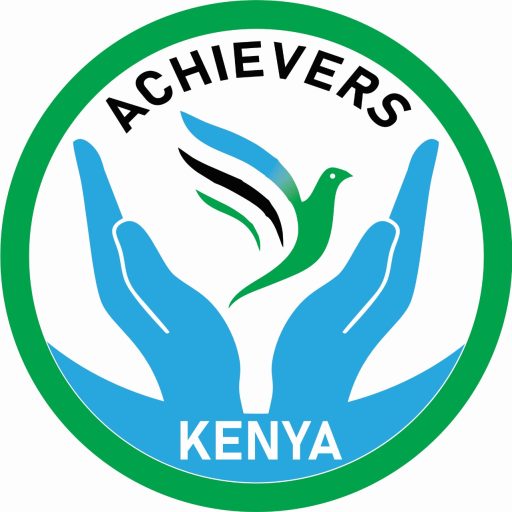Rethinking Revenue Sharing
A Call for Fairness in County Allocations
Introduction: The Need for Equitable Revenue Sharing
Revenue sharing among counties is a cornerstone of Kenya’s devolution, ensuring that every region receives the resources needed for development and service delivery. As the Commission on Revenue Allocation (CRA) presents the Fourth Basis for Revenue Sharing (FY 2025/26 – 2029/30), it is crucial to assess whether the proposed formula truly upholds the principles of equity, fairness, and efficiency.
At Achievers Kenya, we commend the shift from a functional approach to expenditure proxies, aimed at making allocations more predictable. However, we believe critical adjustments are needed to ensure no county is left behind.
Key Concerns & Recommendations for a Fairer Formula
 Population Weighting (42%) – A Balancing Act Needed
Population Weighting (42%) – A Balancing Act Needed


 Equal Share Allocation (22%) – Rewarding Performance
Equal Share Allocation (22%) – Rewarding Performance


 Geographic Size (9%) – Addressing the Cost of Service Delivery
Geographic Size (9%) – Addressing the Cost of Service Delivery


 Poverty Parameter (14%) – Strengthening Social Equity
Poverty Parameter (14%) – Strengthening Social Equity


 Income Distance (13%) – A More Holistic Economic Measure
Income Distance (13%) – A More Holistic Economic Measure


 Stabilization Factor – The Need for Flexibility
Stabilization Factor – The Need for Flexibility


Conclusion: A Call for a More Inclusive Approach
The Fourth Basis for Revenue Sharing is a step forward, but without these adjustments, many counties may still struggle to meet essential service delivery demands. We urge the Senate and the Commission on Revenue Allocation to consider these proposed modifications before the formula is finalized.
At Achievers Kenya, we remain committed to advocating for a just and transparent revenue-sharing process that fosters inclusive development and equitable growth across all counties.

 Afrikaans
Afrikaans Albanian
Albanian Amharic
Amharic Arabic
Arabic Armenian
Armenian Azerbaijani
Azerbaijani Basque
Basque Belarusian
Belarusian Bengali
Bengali Bosnian
Bosnian Bulgarian
Bulgarian Catalan
Catalan Cebuano
Cebuano Chichewa
Chichewa Chinese (Simplified)
Chinese (Simplified) Chinese (Traditional)
Chinese (Traditional) Corsican
Corsican Croatian
Croatian Czech
Czech Danish
Danish Dutch
Dutch English
English Esperanto
Esperanto Estonian
Estonian Filipino
Filipino Finnish
Finnish French
French Frisian
Frisian Galician
Galician Georgian
Georgian German
German Greek
Greek Gujarati
Gujarati Haitian Creole
Haitian Creole Hausa
Hausa Hawaiian
Hawaiian Hebrew
Hebrew Hindi
Hindi Hmong
Hmong Hungarian
Hungarian Icelandic
Icelandic Igbo
Igbo Indonesian
Indonesian Irish
Irish Italian
Italian Japanese
Japanese Javanese
Javanese Kannada
Kannada Kazakh
Kazakh Khmer
Khmer Korean
Korean Kurdish (Kurmanji)
Kurdish (Kurmanji) Kyrgyz
Kyrgyz Lao
Lao Latin
Latin Latvian
Latvian Lithuanian
Lithuanian Luxembourgish
Luxembourgish Macedonian
Macedonian Malagasy
Malagasy Malay
Malay Malayalam
Malayalam Maltese
Maltese Maori
Maori Marathi
Marathi Mongolian
Mongolian Myanmar (Burmese)
Myanmar (Burmese) Nepali
Nepali Norwegian
Norwegian Pashto
Pashto Persian
Persian Polish
Polish Portuguese
Portuguese Punjabi
Punjabi Romanian
Romanian Russian
Russian Samoan
Samoan Scottish Gaelic
Scottish Gaelic Serbian
Serbian Sesotho
Sesotho Shona
Shona Sindhi
Sindhi Sinhala
Sinhala Slovak
Slovak Slovenian
Slovenian Somali
Somali Spanish
Spanish Sundanese
Sundanese Swahili
Swahili Swedish
Swedish Tajik
Tajik Tamil
Tamil Telugu
Telugu Thai
Thai Turkish
Turkish Ukrainian
Ukrainian Urdu
Urdu Uzbek
Uzbek Vietnamese
Vietnamese Welsh
Welsh Xhosa
Xhosa Yiddish
Yiddish Yoruba
Yoruba Zulu
Zulu
Good
Good